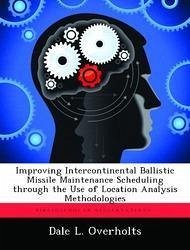Nicht lieferbar

The Ethics of Disengaged Combat and the Fielding of Conventional Intercontinental Ballistic Missiles
Versandkostenfrei!
Nicht lieferbar
Although the United States (US) is no longer in an arms race with another superpower and there is reduced fear of a potential global nuclear war, there are still states who have nuclear weapons and others-states and non-state actors-who pursue them. Therefore, "the [Intercontinental Ballistic Missile] ICBM-ready, accurate, able to blast any target on Earth in 35 minutes-will continue to occupy an important place" in the United State's continuum of capabilities.1 These ICBMs have already been around for more than 40 years and their mission has remained steady. Their mission has been to deter an...
Although the United States (US) is no longer in an arms race with another superpower and there is reduced fear of a potential global nuclear war, there are still states who have nuclear weapons and others-states and non-state actors-who pursue them. Therefore, "the [Intercontinental Ballistic Missile] ICBM-ready, accurate, able to blast any target on Earth in 35 minutes-will continue to occupy an important place" in the United State's continuum of capabilities.1 These ICBMs have already been around for more than 40 years and their mission has remained steady. Their mission has been to deter any aggressor. But, if deterrence fails, ICBMs would withstand the attack and provide the ability to instantly retaliate. Additionally, from the Cold War through today, all ICBMs have had nuclear warheads and inertial type guidance systems to strike their targets. As this paper is being written, however, Air Force Space Command (AFSPC) is looking at the viability of fielding an ICBM "equipped with high-explosive, precision-guided warheads" to deliver conventional ordinance on strategic targets.2 But, is this capability really needed?















